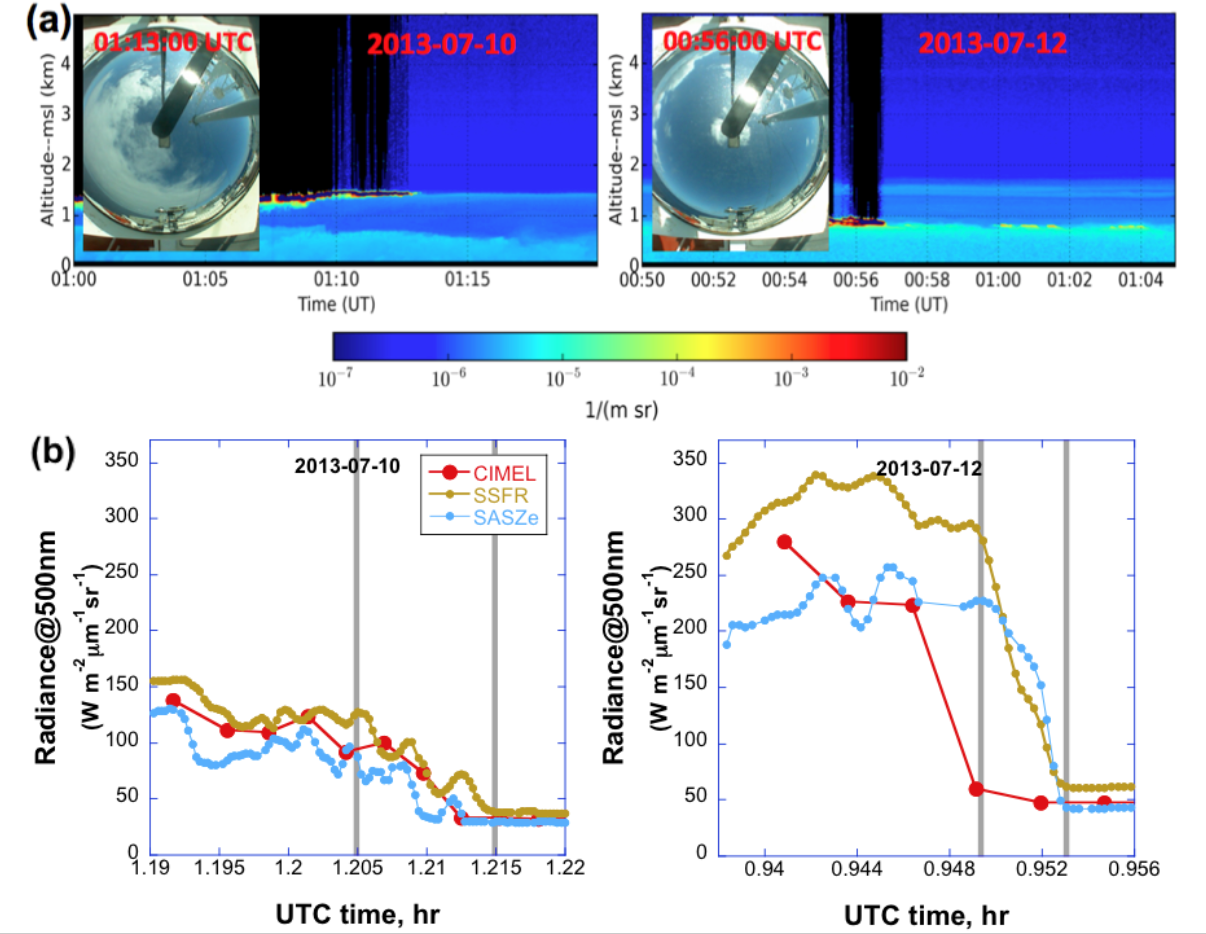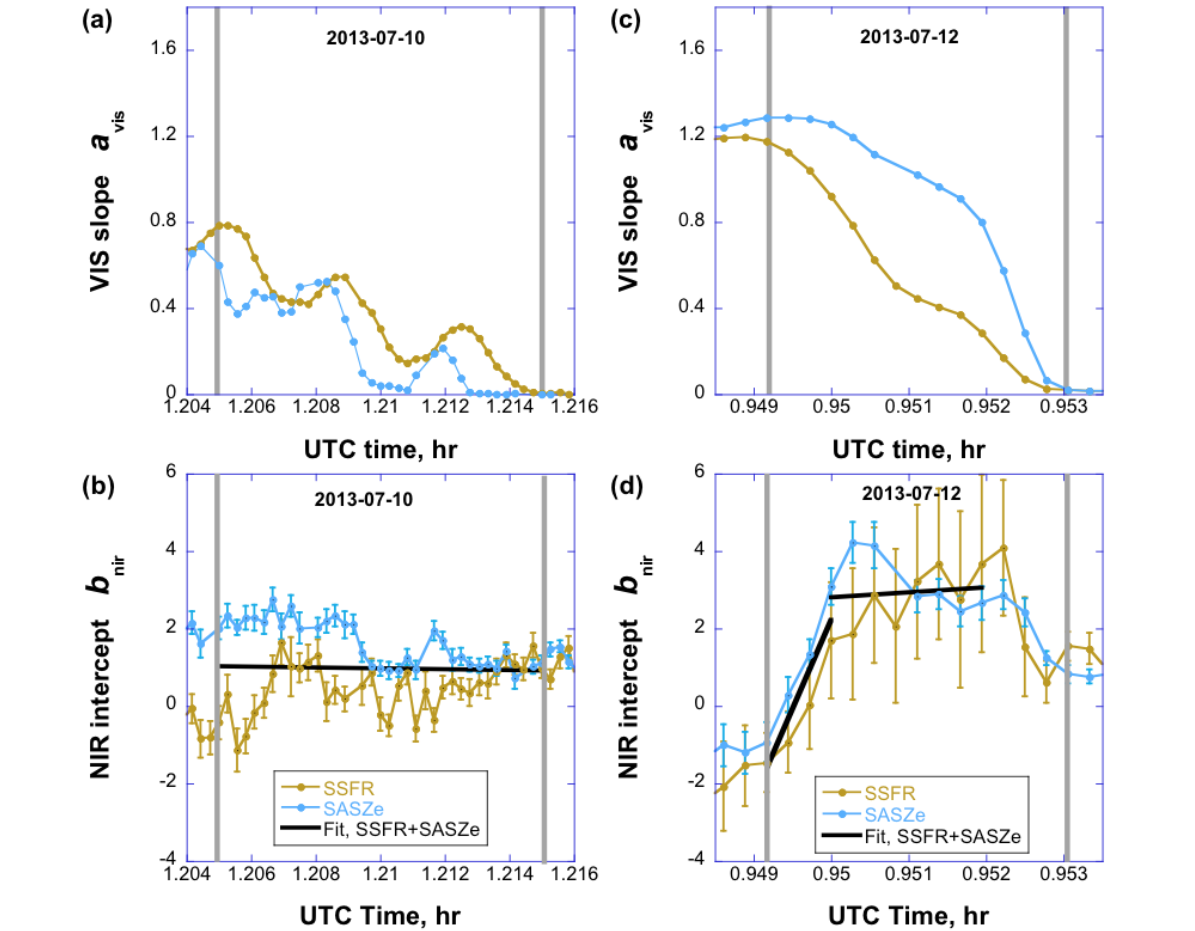Spectrally invariant properties of clouds in transition zones during the MAGIC field campaign
Submitter:
Marshak, Alexander — NASA - Goddard Space Flight Center
Area of research:
Cloud-Aerosol-Precipitation Interactions
Journal Reference:
Science
Knowledge of the variability of cloud properties in transition zones (regions between the definitely cloudy and clear sky columns) would help us understand how microphysical properties of clouds can affect cloud-aerosol interactions and how the clouds are mixed during the entrainment of dry air. This paper uses the spectrally invariant method to analyze the cloud properties of transition zones observed from shortwave hyperspectral radiometers during Marine ARM GPCI Investigation of Clouds (MAGIC) field campaign.
Impact
The results indicate that cloud droplet effective size does not change near the cloud edge during cloud-to-clear transition, thus supporting the hypothesis that inhomogeneous mixing dominates near cloud edges in the studied cases. This paper also demonstrated that by using the spectrally invariant method, cloud-air mixing information can be obtained from ground-based radiation measurements in additional to the conventional in situ measurements.
Summary
We take advantage of redundant measurements of hyperspectral zenith radiance from two independent instruments, Shortwave Array Spectroradiometer-Zenith (ZAS-Ze) and Solar Spectral Flux Radiometer (SSFR), deployed during MAGIC to study the transition zones. To ensure that the studied clouds are non-drizzling water clouds, Total Sky Imager (TSI) images and High Spectral Resolution
Lidar (HSRL) are also used for the case screening.
The spectra captured in cloudy transition zone are approximated as a linear combination of definitely clear and cloudy spectra. The spectrally invariant method uses the coefficients in the linear approximation, slope and intercept, to characterize the properties of the transition zone. Simulation shows that the slope of the visible band is positively correlated with the cloud optical thickness, while the intercept of the near-infrared band has high negative correlation with the cloud drop effective radius, and such relations hold for all solar zenith angles and for cloud-contaminated skies.
In analyzing observed data of the transition zone, we perform the same spectrally invariant analysis on each of two instruments separately. We find that during cloudy-to-clear transitions, the slopes of the visible band decrease, and the intercepts of the near-infrared band remain almost constant near cloud edges. The findings suggest that, while the optical thickness decreases during the cloudy-to-clear transition, the cloud drop effective radius does not change when cloud edges are approached. These results support the hypothesis that inhomogeneous mixing dominates near cloud edges in the studied cases.



